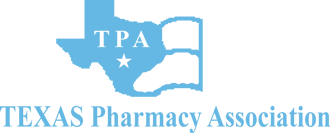Can Prescriptions Cause More Harm Than Good?
Pharmacies fill millions of prescriptions every day across the country. These prescriptions range from simple painkillers to life-saving treatments. Whatever the reason, verifying the right medicine is crucial. Every year, there are 100,000 prescription or medication errors. Some of these errors stem from patients not checking the prescription before leaving the pharmacy. To keep the mistakes at a minimum, use this handy prescription checklist.

1. What’s in a name?
This sounds trivial, but something as simple as a name can cause problems with the prescription. Despite the apps and web portals available, some doctors still prefer to write prescriptions by hand. Written prescriptions can have a spelling error, the wrong first name, or the wrong last name. The same goes for receiving the drug from the pharmacist. While these errors are rare, double-check the name before heading out the door.
2. The drug’s name matters too
At the doctor’s office, a doctor may not disclose the exact name of the drug to the patient. So there’s no way for that patient to confirm the correct medicine with the pharmacist. The pharmacist will depend on the prescription, but an error can mean dispensing the wrong drug. Misreading the prescription or confusing similarly named drugs can happen. The result could be an ineffective treatment, or worse, the patient suffers dangerous side effects. Find out the name of the drug before leaving the doctor, then confirm the drug on the prescription label.
3. Check your drug dosage
Even with the correct name and correct drug, medication errors can happen. Incorrect dosages are one of the most dangerous of these errors, affecting thousands of Americans every year. The doctor, pharmacist, or even patient can provide or ask for the wrong dose. The result could be a lack of relief, harmful side effects, or even death. In addition, incorrect or misread medical abbreviations and poor communication can lead to complications. Confirm with the doctor the correct dosage and check the label of all medication before use.
4. Are there dosing instructions?
When a pharmacist dispenses prescribed medication, there should be dosing instructions attached. These instructions ensure the patient takes the right amount, the right way, at the right times. Research shows that a lack of dosing instructions that are readable to the patient is a common problem. Some pharmacies that handle large volumes in high-stress environments can even leave these out. Make sure to ask for dosing instructions if there is none on the label. Printed labels help patients remember the instructions later.
Take charge of your prescription
These simple clerical errors can turn a helpful prescription into a nightmare. Human error is understandable. However, a simple mistake like the wrong name, medication, or dosage can be fatal. In the end, do not take medication until these simple parts on the prescription are confirmed. Instead, stick with a pharmacy that has a strong reputation or one that uses a failsafe for patient safety. Even then, do a quick check before walking out the door.
RECENT
ARTICLES



Our Patients Say
We pride ourselves on providing exceptional customer service to our community. Here are a few things that the community is saying about us.
Convenient and quality service. Ive never had my prescriptions filled quicker and the pharmacist took the time to tell me about what I was taking.
Excellent experience! Friendly, knowledgeable staff!
I have been a customer since they opened. Julie and Hiten have both treated me with the utmost respect and have always been ready to take care if my needs with a smile




